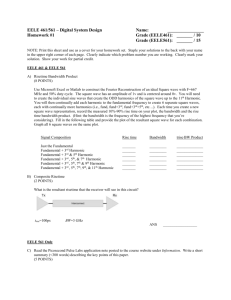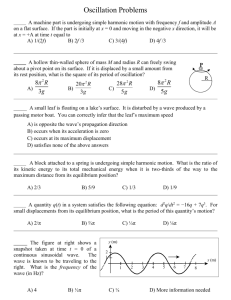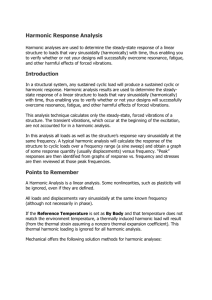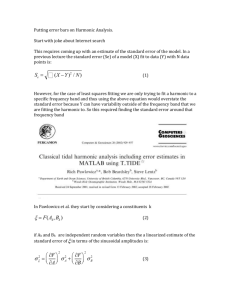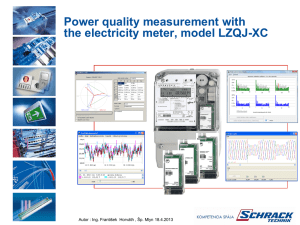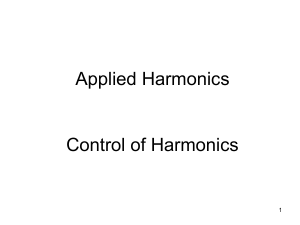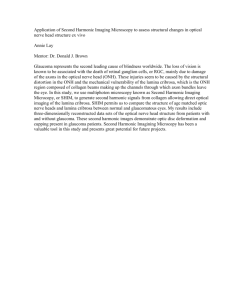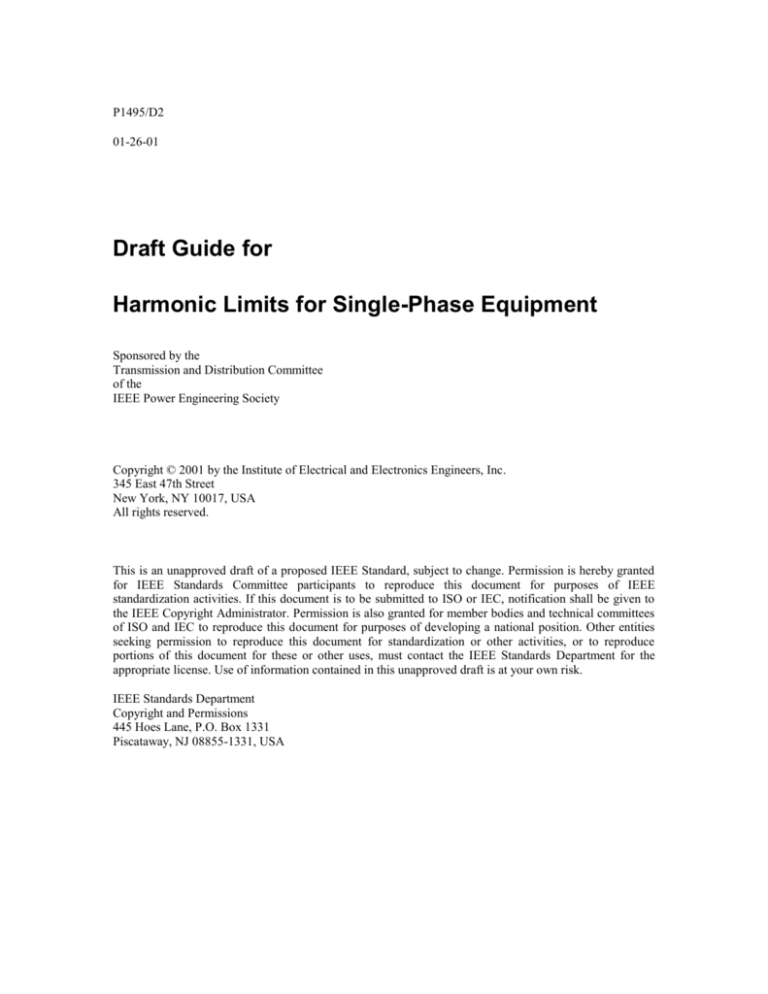
P1495/D2
01-26-01
Draft Guide for
Harmonic Limits for Single-Phase Equipment
Sponsored by the
Transmission and Distribution Committee
of the
IEEE Power Engineering Society
Copyright © 2001 by the Institute of Electrical and Electronics Engineers, Inc.
345 East 47th Street
New York, NY 10017, USA
All rights reserved.
This is an unapproved draft of a proposed IEEE Standard, subject to change. Permission is hereby granted
for IEEE Standards Committee participants to reproduce this document for purposes of IEEE
standardization activities. If this document is to be submitted to ISO or IEC, notification shall be given to
the IEEE Copyright Administrator. Permission is also granted for member bodies and technical committees
of ISO and IEC to reproduce this document for purposes of developing a national position. Other entities
seeking permission to reproduce this document for standardization or other activities, or to reproduce
portions of this document for these or other uses, must contact the IEEE Standards Department for the
appropriate license. Use of information contained in this unapproved draft is at your own risk.
IEEE Standards Department
Copyright and Permissions
445 Hoes Lane, P.O. Box 1331
Piscataway, NJ 08855-1331, USA
07-10-00
P1495/D2
Introduction
(This introduction is not part of IEEE P1495, Guide on Harmonic Limits for Single-Phase Equipment.)
With increasing quantities of non-linear loads being added to electrical systems, it has become necessary to
establish criteria for limiting problems from system voltage degradation. Presently, IEEE Standard 5191992 addresses harmonic limits at the consumer and service provider interface. The intent of IEEE 519 is
to limit harmonic current injection into power systems and ensure voltage integrity. This standard is
manageable and practical when properly applied to industrial and commercial three-phase consumers.
However, when IEEE 519 is applied to single-phase system connections (particularly residential
consumers), it can become highly impractical.
Furthermore, engineering studies indicate that the
cumulative effect of single-phase non-linear loads may potentially cause voltage degradation on power
distribution systems even with individual single-phase consumer IEEE 519 compliance.
The following guide recommended practice/standard for equipment is developed to help preserve voltage
integrity by limiting harmonic current injection of single-phase loads which are likely to appear in
increasing numbers in power distribution systems.
By addressing harmonic current distortion at the
individual sources, system problems may be avoided, particularly in areas where IEEE 519 limitations are
not likely to be followed. The harmonic current limits established in this standard are proposed with the
intent of minimizing the impact on existing equipment design.
Coordination with existing industry
practices, and international harmonic standards is also considered.
_____________________________________________________________________________________
At the time this standard was completed, the working group had the following membership:
The following persons were on the balloting committee: (To be provided by IEEE editor at time of
publication.)
_____________________________________________________________________________________
Note: new text (i.e., changes from previous version) is added in italics. Deletions are shown with a
strikethrough.
Copyright © 2000 IEEE. All rights reserved.
This is an unapproved IEEE Standards Draft, subject to change.
ii
07-10-00
P1495/D2
Contents
Introduction .................................................................................................................................................... ii
1. Overview .................................................................................................................................................... 4
1.1 Scope ..................................................................................................................................................... 4
1.2 Purpose .................................................................................................................................................. 4
2. References .................................................................................................................................................. 4
3. Definitions .................................................................................................................................................. 5
4. Loads covered in guidestandard ................................................................................................................. 6
5. Background ................................................................................................................................................ 9
6. Existing related industry standards and practices ..................................................................................... 11
6.1 IEEE 519 ............................................................................................................................................. 11
6.2 IEC 61000-3-2 and 61000-3-4 ............................................................................................................. 11
6.3 Social Security Administration requirements for IT equipment .......................................................... 13
6.4 California Energy Commission electric vehicle charger requirements ................................................ 13
7. Recommended distortion limits ................................................................................................................ 14
7.1 Differences in distribution design ........................................................................................................ 15
7.2 Consideration of multiple nonlinear loads ........................................................................................... 17
7.3 Diversity effects ................................................................................................................................... 17
7.4 Cancellation effects ............................................................................................................................. 17
7.5 Load levels and harmonics .................................................................................................................. 18
7.6 Limits ................................................................................................................................................... 18
8. Testing requirements ................................................................................................................................ 18
9. Bibliography ............................................................................................................................................. 23
Copyright © 2000 IEEE. All rights reserved.
This is an unapproved IEEE Standards Draft, subject to change.
iii
07-10-00
P1495/D2
Guide for Harmonic Limits for Single-Phase
Equipment
1. Overview
The growth in power electronics has impacted many loads that traditionally were considered linear in
nature. As a result, the number of nonlinear loads has increased and is expected to increase dramatically in
the years ahead.
High harmonic content should be regarded as an undesirable load characteristic much like low power factor
or low efficiency. With each of these, it’s a matter of degree. While some can be tolerated, an excessive
amount should be avoided.
Although the number of problems caused by harmonics is not yet a significant widespread problem, the
potential for such problems is much greater today than it was 10 years ago, and the effects of nonlinear
loads are becoming an increasing concern in many parts of the world today. In addition, single-phase
converters, found in many devices, have particularly high amounts of all odd harmonics, particularly the
third harmonic.
A variety of single-phase equipment can be categorized as nonlinear today. Switch-mode power supplies
are found in a variety of devices like computers, televisions, VCRs, etc. Compact fluorescent lamps are
now available with electronic ballasts. Variable speed control is evolving to include washers, dryers, space
heating and air-conditioning. Battery chargers are being developed for electric and hybrid-electric vehicles,
and the list continues.
There have been a number of different studies which investigated one of these new technologies to see if
and when a potential problem might surface on the distribution system due to single-phase harmonic
sources. For the most part, these studies did not consider these loads in combination.
What we find is found is a wide range of nonlinear devices that have been identified which collectively need
to be considered for future power distribution systems. In addition, there are some newer technologies
being explored which could add to the previous mix.
The objective is to arrive at a reasonable set of limits for single-phase equipment such that the likelihood of
a problem caused by harmonics is small.
1.1 Scope
Current distortion limits for single-phase utilization equipment rated under 600 V and up to 40 A.
1.2 Purpose
To establish equipment harmonic limits, much like IEC 1000-3-2, which deals with both three-phase and
single-phase limits for devices under 16 A and with 230 V nominal rating. Existing Std 519 contains site
limits on harmonics, and is primarily three-phase.
Copyright © 2000 IEEE. All rights reserved.
This is an unapproved IEEE Standards Draft, subject to change.
4
07-10-00
P1495/D2
2. References
In this document, two types of "references" are used: those that are directly related to the subject being
discussed - references - and those that provide supporting information to the subject being discussed bibliographic citations. For the convenience of the reader in not breaking the pace of reading, "references"
and "citations" are briefly identified in the text as described below.
References contain information that is implicitly adopted in the present document; complete
implementation of the recommendations made in the present document would require the reader to consult
that reference for the details of the subject. This first type is introduced in the text as [xx], and the listing is
provided below, in this section.
Citations are not essential to implementation of the recommendations, but are provided for the use of
readers seeking more detailed information or justification. This second type is introduced in the text as
[Ayy] and the listing is provided in the Bibliography.
This document shall be used in conjunction with the following publications:
[1]
IEEE Std 100-1996, Dictionary of Electrical and Electronics Terms
3. Definitions
3.1 Abbreviations
ECM
electronically-commutated motor
EV
electric vehicle
THD
total harmonic distortion
THDI
total harmonic distortion of current
THDV
total harmonic distortion of voltage
_____________________________________________________________________________________
3.2 Definitions
Whenever possible, the definitions of the terms used in this document are those found in IEEE Std 1001996 [1] or Std 519-199x [Azz]. In some instances, the IEEE definition in the current dictionary may be
either too broad or too restrictive; in such a case, an additional definition is included in this section.
3.1 distortion factor: The ratio of the root-mean-square of the harmonic content to the root-mean-square
value of the fundamental quantity, often expressed as a percent of the fundamental. Also referred to as total
harmonic distortion.
3.2 harmonic: A sinusoidal component of a periodic wave having a frequency that is an integral multiple of
the fundamental frequency.
3.3 harmonic distortion: The mathematical representation of the distortion of a pure sine waveform. See:
distortion factor.
3.4 linear load: An electrical load device which, in steady state operation, presents an essentially constant
load impedance to the power source throughout the cycle of applied voltage.
3.5 noise: Electrical noise consists of unwanted electrical signals, which produce undesirable effects in the
circuits of the control systems in which they occur. For this Guide, "control systems" is intended to include
sensitive electronic equipment in total or in part.
Copyright © 2000 IEEE. All rights reserved.
This is an unapproved IEEE Standards Draft, subject to change.
5
07-10-00
P1495/D2
3.6 nonlinear load: Electrical load that draws current discontinuously or whose impedance varies during
the cycle of the input ac voltage waveform.
3.7 total demand distortion: The total rms current distortion in percent of maximum demand current.
3.8 voltage distortion: Any deviation from the nominal sinewave of the ac line voltage.
4. Loads covered in this guidestandard
This section will characterize the more common types of single-phase nonlinear loads, including switchmode power supplies, electronic lighting ballasts, variable speed heat pumps and air conditioners, and
battery chargers for electric vehicles.
4.1 Switch-Mode Power Supplies
A variety of ac electronic equipment is powered internally by dc. In the early days of power supply design,
the common single-phase power supply was linear, more or less. In Fig. 4-1, a schematic of a linear power
supply, the output voltage is controlled by means of a transistor (not shown) which operates in its active
region. Comparatively speaking, the linear power supply has high power losses (overall efficiency in the
30-60% range). In addition, the 60 Hz transformer represents a significant weight to the power supply and
results in a more costly design.
L
ac
C
dc
Fig. 4-1 Linear Single-Phase dc Power Supply
Fig. 4-2. Switch-Mode Power Supply
Fig. 4-2 is a schematic of a switch-mode dc power supply. The dc voltage change is attained through dc-todc converter circuits which employ transistors or MOSFETS to perform the switching (on or off). Unlike
the linear power supply, the solid-state devices do not have to operate in their active region, resulting in
reduced power losses. In this design, the 60 Hz transformer has been eliminated, resulting in reduced
weight and improved overall efficiency (in the 70-90% range). There is still a transformer (not shown), but
it is smaller, lighter and less costly because it operates at high frequencies.
Copyright © 2000 IEEE. All rights reserved.
This is an unapproved IEEE Standards Draft, subject to change.
6
07-10-00
P1495/D2
L
ac
Switching
C
dc
Regulator
1.0
0.0
-1.0
Fig. 4-3 Voltage and Current for a Switch-Mode Power Supply
With a switch-mode power supply, the ac voltage is converted to dc through diode rectifiers. The regulated
dc output is attained by means of high frequency (e.g., 20-100 kHz) switching. Although not shown, a high
frequency isolation transformer is used. This transformer is much lighter and smaller than the one used in
the linear power supply. The current draw is controlled by the voltage appearing across the low voltage
capacitor. The resulting current waveform appears like that shown in Fig. 4-3, in which the current has a
zero value until some minimum capacitor voltage is reached, and then rises to a peak value and back to zero
again. As contrasted with the linear power supply, the current appearing on the ac side lasts for only a
portion of each half-cycle. As a result, the characteristic is nonlinear and the device is a source of
harmonics. The term crest factor, the ratio of peak to rms current, is often associated with harmonics. For a
pure sine wave, the crest factor is 1.414. Common switch-mode power supplies can have crest factor values
exceeding 5.
Copyright © 2000 IEEE. All rights reserved.
This is an unapproved IEEE Standards Draft, subject to change.
7
07-10-00
P1495/D2
Measurements [from Grady] indicate the current waveform for a color television has a THD I of 121% and a
third harmonic content of 84%. Similar measurements for a desktop computer with a laser printer indicate a
THDI as high as 140% and a third harmonic content of 91%.
4.2 Electronic Ballasts for Fluorescent Lighting
Fluorescent lamps with magnetic ballasts are three to four times more efficient than incandescent lamps.
Electronic ballasts for fluorescent lamps result in a further 20-30% in efficiency over the magnetic ballasts.
Most of the older high-loss magnetic ballasts can no longer be sold in the United States. Like the switchmode power supply, electronic ballasts employ high frequency switching, usually in the 20-45 kHz range.
When electronic ballasts were first introduced, the THDI was around 100%, with a large third harmonic
component.
Many commercial services employ three-phase 4-wire distribution systems, with the neutral conductor often
a smaller size than the phase conductor. With this type of electrical design, the third harmonic current (and
odd multiples of 3rd) from each phase adds in the neutral. It was not surprising to find neutral currents
greater than phase currents where many of the early electronic ballasts were installed. In fact, the neutral
current could easily be twice the magnitude of the phase currents due to the high third harmonic content.
A relative newcomer is the compact fluorescent lamp (CFL) with electronic ballast. Generally found in the
range of 15 to 27 W, CFLs are used to replace 40 to 100 W incandescent lamps. Many utilities’ energy
conservation programs encouraged their customers to install these more efficient lamps and later discovered
they introduced a significant source of harmonics. Pileggi et al concluded that a feeder with just 2 or 3
compact fluorescents per household would lead to excessive voltage distortion [1]. Obviously, the amount
of current distortion from such a device can vary.
Following complaints resulting from high neutral currents in three-phase commercial and industrial
environments, ANSI established limits on current harmonics. The maximum THDI is 32% and the triplens
(third harmonic and odd multiples of third, i.e., 3 rd, 9th, 15th, etc.) are limited to 30% per ANSI C82.111993.
4.3 Variable Speed Heat Pumps and Central Air
Conditioning
Some newer heat pump and central air-conditioning designs incorporate variable speed control of the
compressor, blower and fan motors. If the temperature is very hot or cold, the heat pumps run at maximum
speed; however, if the temperature is milder, they run at low speeds. The result is more energy efficient,
more comfortable and quieter than conventional systems.
Employing electronically-commutated motors (ECMs), the input of a variable speed heat pump resembles a
large switch-mode power supply (e.g., 3 kW or more). The ECM is a dc brushless motor with stator
construction similar to a three-phase ac induction motor. The stator winding current is sequenced and
switched creating a rotating magnetic field. This switching is performed electronically by an inverter. The
rotor uses permanent magnet construction.
Conventional heat pumps have a current THD of 13% with around 9% third harmonic content; some of the
newer ECM designs have current THD values of 123% with the third harmonic content of 85%.
Because of the large load, there is concern that it would only take relatively few installations of this type of
heat pump to cause voltage distortion problems. In [2], the authors found the voltage distortion on a
distribution feeder reached 10% when the penetration rate for these variable-speed drives reached 10%, i.e.,
Copyright © 2000 IEEE. All rights reserved.
This is an unapproved IEEE Standards Draft, subject to change.
8
07-10-00
P1495/D2
when 10% of the homes installed the new ECM designs. Though a 10% THD V would be deemed
unacceptable by most of us, it does give us a sense of how much of a particular nonlinear load would cause
problems on a residential feeder.
4.4 Electric Vehicle Battery Chargers
Many utilities are presently marketing electric vehicles (EVs) or are providing the battery chargers for EVs.
At issue is the fact that the technology exists to produce low distortion chargers. However, without any
harmonic limit to meet, manufacturers will likely opt for a lower cost, higher distortion design. Considering
that the single-phase chargers represent a 240 V load of around 6 kW, the potential for harmonic problems
is genuine, particularly at the residential level. Many distribution engineers have focused more on the load
impacts of chargers on transformers and feeders. The load impacts can be significant; however, the
harmonic effects are potentially large too.
Some of the least expensive battery chargers have THDI values of 91%. Based on [2] and the assumption
that the EV charger load is twice that of the variable-speed drive, the penetration rate would only have to be
5% before the THDV reaches 10%. Obviously, to meet the recommended THDV limit of 5%, the
penetration would have to be less than 5% or the equipment harmonic limit would have to be lower.
5. Background
An approximate expression for determining the amount of each current harmonic present for single-phase
converters is given by the following equation:
%n 200 / n
where: n = harmonic order (3, 5, 7, 9, 11, 13, etc.)
A similar approximate expression for determining the amount of each current harmonic present for threephase (6-pulse) converters is given by the following equation:
%n 100 / n
where: n = harmonic order (5, 7, 11, 13, 17, etc.)
In both of these expressions, the harmonic is expressed in terms of the fundamental frequency term. The
results of these two expressions are shown in the table below.
Table 4-1. Approximate Current Harmonic Content (%) for 1-Phase and 3-Phase Converters
Harmonic
3
5
7
9
11
13
Copyright © 2000 IEEE. All rights reserved.
This is an unapproved IEEE Standards Draft, subject to change.
15
9
07-10-00
P1495/D2
1-phase converter
67
40
29
22
18
15
13
3-phase converter
x
20
14
x
9
8
x
As can be seen, most single-phase converters produce all the odd harmonics at about twice the amount of
their three-phase converter counterparts. In addition, single-phase converters have significant amounts of
third harmonic content, which the three-phase converters do not have.
It should be noted that the single-phase equation underestimates the % of each harmonic and the three-phase
equation overestimates the harmonic content in most cases. The current total harmonic distortion (THD),
which is the weighted or rms assessment of all harmonics, approaches 100% for many of these devices. The
expression for THD is as follows:
THD I
2
2 n
I1
I
I 32 I 52 I 72 ...
I1
where: THDI = current total harmonic distortion
In = harmonic rms current (in amps or %)
I1 = fundamental frequency rms current (in amps or 100%)
A similar equation for voltage THD results from V being substituted for I in the above. Using the values
from Table 1-1, the THDI for a single-phase converter is around 95% versus 30% for a three-phase
converter, based on odd harmonics up to the 50 th. Up until now, because the typical system impedance up
to a harmonic source is reasonably low and the typical harmonic source is a relatively small load, the
resulting THDV (in %) will usually be in the single digits.
The harmonic content and THD can be obtained for different levels of load for some devices. For example,
a battery charger has a variable load characteristic and the harmonic content and THD varies as a function
of load. It us usually sufficient to note the THD and % of individual harmonics at rated load. At lower
levels of load, the resulting percentages (of individual harmonics and THD) are usually offset by the lower
base current at that load. For example, with two loads having the same base current, one that produces 20%
THDI at 50% load is no worse than one which produces 10% THD I at 100% load. They both produce the
same distortion in amperes.
INCLUDE RESULTS OF VARIOUS SYSTEM STUDIES
Copyright © 2000 IEEE. All rights reserved.
This is an unapproved IEEE Standards Draft, subject to change.
10
07-10-00
P1495/D2
6. Existing related industry standards and practices
6.1 IEEE 519
IEEE 519-1992, Recommended Practices and Requirements for Harmonic Control in Electric Power
Systems, established limits on harmonic currents and voltages at the point of common coupling (PCC), or
point of metering [6].
The limits of IEEE 519 are intended to:
1) Assure that the electric utility can deliver relatively clean power to all of its customers;
2) Assure that the electric utility can protect its electrical equipment from overheating, loss of life from
excessive harmonic currents, and excessive voltage stress due to excessive harmonic voltage.
Each table from IEEE 519 lists the limits for harmonic distortion at the point of common coupling (PCC) or
metering point with the utility. The voltage distortion limits are 3% for individual harmonics and 5% THD.
Table 6-1 contains current distortion limits which apply for user voltage levels ranging from 120 V to 69
kV. The harmonic current limits are based on the size of the user with respect to the size of the power
system to which the user is connected. The ratio of ISC/IL is the short circuit current available at the PCC to
the maximum fundamental load current or that current associated with the measured demand of the load.
It is recommended that the load current, IL, be calculated as the average current of the maximum demand for
the preceding 12 months. The values listed in Table II should be used as system design values for the
"worst case" of normal operations. As noted earlier, the TDD is normally based on the maximum demand
current.
The heaviest electrical users have the most stringent harmonic limits. However, as the size of the user load
decreases with respect to the size of the system, the user can inject a larger percentage of harmonic current
into the utility system. This protects other users on the same feeder as well as the utility, which is required
to furnish a certain quality of power to its customers.
Copyright © 2000 IEEE. All rights reserved.
This is an unapproved IEEE Standards Draft, subject to change.
11
07-10-00
P1495/D2
Note that all of the harmonic limits in IEEE 519 are based on a customer load mix and location on the
power system. The limits are not applied to particular equipment, although, with a high amount of
nonlinear loads, it is likely that some harmonic suppression may be necessary. As the load mix changes, it
is often necessary to reevaluate the limits of IEEE 519. This is one of the difficulties with the Standard.
6.2 IEC 61000-3-2 and IEC 61000-3-4 (formerly 1000-3-2 and 1000-3-4)
6.2.1 IEC 61000-3-2 (1995-03)
Specifies limits for harmonic current emissions applicable to electrical and electronic equipment having an
input current up to and including 16 A per phase, and intended to be connected to public low-voltage
distribution systems. The tests according to this standard are type tests. Test conditions for particular
equipment are given in annex C. For systems with nominal voltages less than 220 V (line to neutral), the
limits have not yet been considered.
6.2.2 IEC/TS 61000-3-4 (1998-10)
The recommendations of this technical report are applicable to electrical and electronic equipment with a
rated input current exceeding 16 A per phase and intended to be connected to public low-voltage ac
distribution systems of the following types:
-
nominal voltage up to 240 V, single-phase, two or three wires;
-
nominal voltage up to 600 V, three-phase, three or four wires;
-
nominal frequency 50 Hz or 60 Hz
These recommendations specify the information required to enable a supply authority to assess equipment regarding
harmonic disturbance and to decide whether or not the equipment is acceptable for connection with regard to the
harmonic distortion aspect. This document is not to be regarded as an International Standard.
The European standards, IEC 61000-3-2 & 61000-3-4, placing current harmonic limits on equipment, are
designed to protect the small consumer's equipment. The former is restricted to 16 A; the latter extends the
range above 16 A. Two particular classes of equipment covered are:
Class C
Lighting equipment
Class D
Equipment having current with a "special waveshape"
Table III gives the limits for lighting equipment. Class D is defined by a special waveshape (Fig. 1). If the
current waveshape of a nonlinear load is within the limits of Fig. 1 for 95% of a half-cycle, then it is
deemed to be Class D equipment and must satisfy the limits of Table IV.
Class D equipment is more representative of many of the single-phase nonlinear loads that were previously
discussed. Referring to Table IV, the current limit for a given harmonic is based on the input power
(mA/W) as well as a maximum current value. Table V shows the latest proposal for limits.
It is not clear from the tables in IEC 61000-3-2 and 61000-3-4 how restrictive the limits are as a function of
equipment rating. The table below shows what the resulting current THD limit is for a 220 V device
designed to meet the latest IEC proposals.
Copyright © 2000 IEEE. All rights reserved.
This is an unapproved IEEE Standards Draft, subject to change.
13
07-10-00
P1495/D2
Table 6-1. THD Limits from IEC 61000-3-2 and 61000-3-4
Wattage
THD Limit (%)
< 600
90
1000 – 1500
60
> 3500
26
Fig. 2 show the same information contained in this table, but also shows the linear decline between intervals
(i.e., between 600 W & 1000 W, and between 1500 W & 3500 W).
IEC Limits from 1000-3-2 & 1000-3-4
100
THDi(%)
80
60
40
20
By comparison with the limits suggested by IEEE 519, the IEC limits permit higher levels of harmonic
distortion.
0
0
1000
2000
3000
4000
6.3 California Energy Commission electric
vehicle charger requirements
Watts
Figure 6-3. IEC Harmonic Limits as a Function of Wattage
7. Recommended distortion limits
At this point, we can either develop our own limits or we can adopt limits of others, like the IEC. We are
fortunate in that a number of studies in the U.S. that have already been undertaken. The reports on these
efforts cover the spectrum of low power devices like compact fluorescent lamps [Pileggi & Emanuel],
larger loads like variable speed heat pumps and central air conditioning [Grady] and large electrical loads
like battery chargers for electric vehicles [Grady]. These studies determine how much of a given nonlinear
load a distribution system can tolerate before one exceeds 5% voltage THD. This is probably a more
meaningful starting point since these studies involve system models conforming to the distribution systems
found in the U.S. and the harmonic spectrum of modern single-phase converters.
Copyright © 2000 IEEE. All rights reserved.
This is an unapproved IEEE Standards Draft, subject to change.
14
07-10-00
P1495/D2
The other option is to adopt the proposed IEC limits (i.e., 61000-3-2 and 61000-3-4). If the distribution
systems were similar enough around the world, and if the use of such a standard was validated by field
experience, this would make sense. However, there are two basic distribution systems found around the
world and the two are different enough – in terms of harmonic implications.
7.1 Differences in distribution design
A typical distribution system found in the U.S. (and in North America in general) operates at 12.5 kV
(phase-to-phase). It is radial in that the loads are connected to only one source of supply. Main feeders are
4-wire (3 phases and a neutral) and branches are usually single-phase with a limited amount of three-phase
used for branches. Transformers are connected wye wye. The large majority of transformers are singlephase connected from phase-to-neutral at 7.2 kV, and stepping the voltage down to 120/240 V (3-wire) for
residential and most single-phase commercial loads. A typical transformer rating for residential application
is 25 kVA or 50 kVA with services run to between 6 and 10 homes.
The European style of distribution system operates at 11 or 12 kV (phase-to-phase), but does not have a
neutral. Thus, the main feeders are 3-wire circuits. Transformers are three-phase connected delta wye; they
are more like a miniature substations with 500, 750 or 1000 kVA ratings being popular. Secondaries
operating at 400/230 V are usually tapered (i.e., 2 or 3 conductor sizes are used, with the conductor size
close to the transformer is considerably larger than that found near the end of the secondary) and cover
extensive distances to provide service to 60 or 100 customers. Individual 230 V (2-wire) services are
tapped off the secondary system.
A much less common system in the U.S. is secondary network distribution, in the form of either a secondary
grid network or a spot network. Grid networks are found in the downtown areas of many older cities to
supply office buildings and other commercial loads. With secondary grid networks, 6 or more feeders and
network transformers in parallel supply a low voltage grid (208/120 V or so). Transformers are large (e.g.,
500 or 1000 kVA) compared to radial distribution and are connected delta wye, similar to the European
distribution systems, making the third harmonic of little concern. Due to high rise construction, spot
networks have replaced grid networks in popularity. With spot networks, each major load is served from a
combination of 3 or more circuits and transformers in parallel (at 480/277 V typically). With the grid or
spot networks, the equivalent source impedance to the point of common coupling is an order of magnitude
smaller than that found in a radial system. Thus, the ability of a secondary network system to handle
harmonics is much greater than a radial system. However, it should be remembered that the secondary
network is not the typical distribution system; most utilities utilize radial distribution as their standard.
Table 6-2 summarizes the important differences between the two systems. The U.S. distribution system is
more susceptible to problems brought about by the third harmonic. Third harmonics readily pass through
the wye wye connected transformers in the U.S., while the European delta wye transformers provide a
closed path for third harmonics in the delta winding, thus providing third harmonic isolation between the
secondary and the primary. In addition, stray voltage can also result due to the presence of third harmonics
on the neutral of U.S. systems [Conrad et al].
The equivalent impedance to the customer is greater with the European style of distribution largely due to
the extensive amount of secondary used. However, the service transformer is usually the point of common
coupling for U.S. distribution systems. Because of the smaller transformers ratings used in the U.S., the
equivalent system impedance to the point of common coupling is higher with the U.S. type of distribution,
suggesting that the U.S. harmonic limits ought to be lower than those for the European distribution. One
could argue that the point of common coupling for the European type of distribution would be beyond the
transformer, i.e., including some amount of secondary. Nonetheless, the equivalent system impedance at
Copyright © 2000 IEEE. All rights reserved.
This is an unapproved IEEE Standards Draft, subject to change.
15
07-10-00
P1495/D2
SAVE for Table 6-2.
Copyright © 2000 IEEE. All rights reserved.
This is an unapproved IEEE Standards Draft, subject to change.
16
07-10-00
P1495/D2
the point of common coupling would still be greater for the U.S. type of distribution, suggesting that lower
harmonic limits are needed for equipment used on U.S. systems.
Since the service wires in the U.S. system connects to both 120 V and 240 V loads, suitable limits must be
adopted for each. From the standpoint of the primary distribution system, a 1 amp 240 volt load will have
the same impact as a 2 amp 120 V load. Thus, the ampere limits for 120 V will be twice the 240 V limits.
7.2 Consideration of multiple nonlinear loads
In each nonlinear load category, some assessment of market potential and coincident usage should be made
initially to guide the limits ultimately chosen. For example, if one looks at an arbitrary ranking of low,
medium and high, one can see where potential problems are likely to occur. A high market potential
combined with high coincident usage indicates the worst a bad situation from a harmonics standpoint. On
the other hand, a low coincident usage combined with low market potential might be judged a good is the
best situation from a harmonics standpoint. These are the two extremes; all other combinations are lie
somewhere between these two limits.
Coincident
Usage
High
Worst Bad
situation
Medium
Low
Best Good
situation
Low
Medium
High
Market Potential
In addition, the criticality of a particular type of nonlinear load can be established by the additional ranking
of its wattage rating times its THDI.
While this matrix classification sorts out the extreme cases, case studies and or experience is needed to
establish whether these scenarios yield acceptable performance (i.e., do not violate voltage harmonic
limits).
It is important to consider nonlinear loads in combination, rather than think of principally one source of
harmonics.
7.3 Diversity effects
When two or more similar loads are connected to a portion of a distribution system, their usage patterns
may be different. As a result, the maximum coincident demand is usually less than the sum of the individual
demands. This result is referred to as diversity.
Diversity has an important role in distribution design practice. Whenever possible, it is important to
incorporate realistic use patterns for nonlinear loads to avoid overstating their impact.
Copyright © 2000 IEEE. All rights reserved.
This is an unapproved IEEE Standards Draft, subject to change.
17
07-10-00
P1495/D2
7.4 Cancellation effects
Cancellation among groups of particular harmonics result principally from phase displacement for the
harmonic or harmonics involved.
Cancellation due to phase-angle diversity between dispersed single-phase non-linear loads is insignificant
for the 3rd and 5th harmonics, but becomes increasingly significant for higher harmonics [Mansoor].
However, in three-phase commercial service, there is phase shift introduced by having some loads
connected phase-to-phase and others, phase-to-neutral. In addition, isolation transformers result in a 30
degree phase shift for the loads that they serve, making cancellation more likely.
However, for residential applications and single-phase commercial uses, the dominant use of the wye-wye
transformer connection tends to minimize cancellation effects.
Like diversity, cancellation effects should be included.
7.5 Load levels and harmonics
Most often, the harmonic spectrum for a particular device is given at nameplate load. For PCs and compact
fluorescent lamps, the characteristic is fixed and doesn’t vary through time. With variable speed heat
pumps and EV battery chargers, there can be quite a bit of variation in the harmonic spectrum as a function
of load. Care should be exercised in assigning the appropriate harmonic spectrum to a particular nonlinear
load. This is particularly true for monitoring studies since most monitoring equipment computes the
harmonic distortion as a function of the fundamental frequency current.
7.6 Limits
Based on the system studies done to date, and allowing for combinations of nonlinear loads, the maximum
recommended THD levels are shown in the table below.
Table 7-1. Recommended Current Distortion Limits
Maximum THDI
15 %
Maximum 3rd harmonic current
10 %
8. Testing requirements
This section describes the fundamental requirements for harmonic voltage and current measurements for
low voltage equipment. It is explained that such measurements must be performed using a nearly perfect
sinusoidal voltage with a standard internal impedance. This condition provides the basis for comparison
among different non-linear loads. Another topic discussed in this paper is the importance of accurate and
calibrated transducers and analyzers.
Copyright © 2000 IEEE. All rights reserved.
This is an unapproved IEEE Standards Draft, subject to change.
18
07-10-00
P1495/D2
8.1 Background
Today’s engineer takes for granted that electrical equipment manufacturers will list the major values that
characterize equipment performance: rated voltage, frequency, kVA, power factor, output power, rms line
current and more. Such information is needed for several reasons:
Equipment selection, installation and protection.
Selection and design of auxiliary equipment.
Comparison among similar products.
Simulations that will help prevent or explain undesirable situations.
The last two items are probably the main motivation for the correct information on the current harmonics
spectrum. We should remember that, for useful simulations and meaningful predictions, it is necessary to
know reasonably well (i.e., within 5%) the values of the dominant harmonic current phasors (amplitude as
well as phase angle).
Very few manufacturers, however, list information describing harmonic current spectrum produced by their
equipment. This is especially true for single-phase units. Even when such information is provided, the
accuracy of the listed values is questionable since the industry does not yet have standards that call for
certain procedures and types of instrumentation.
This section mentions the problems associated with the measurements of harmonic currents produced by
single-phase loads and suggests a measurement protocol.
8.2 The voltage supply
Among many factors that control the frequency spectrum (harmonics) of the line current supplying a
nonlinear load, five items are essential:
The design of the nonlinear load (circuit topology, components, geometry and physical properties of
the active materials)
The rms value and the frequency spectrum of the applied voltage.
The value and frequency dependence of the Thevenin impedance measured at the bus supplying the
observed nonlinear load.
The amount of power converted and delivered by the nonlinear load and the characteristics of the
output power. For example, a mechanical load will require a certain torque and speed, and an arc
welder will be characterized by the arc current and gap.
Nonelectrical environmental parameters such as temperature and pressure. Some electrical discharge
lamps are very sensitive to such parameters.
We learn from here that, when measuring the current harmonic emission produced by a nonlinear load, it is
imperative to energize the observed nonlinear load from a voltage supply with a standardized internal
impedance and a nearly perfect sinusoidal voltage. This approach will help provide a common reference
level for comparing different nonlinear loads.
Copyright © 2000 IEEE. All rights reserved.
This is an unapproved IEEE Standards Draft, subject to change.
19
07-10-00
P1495/D2
The basic measurement circuits are presented in Fig. 8-1. The voltage source must have a frequency of 60
0.01 Hz and very low distortion (THDV < 0.5%). It is suggested that the Thevenin impedance, measured
at 60 Hz and including the current transducer CT and the analyzer voltage input impedance, is:
Zs = 10 + j 50
m
for a 240 V load
m
for a 120 V load.
and
Zs = 3 + j 15
A tolerance of 5% to the above values is permitted. The frequency dependence of Zs must be linear (see
Fig. 8-2) with a margin of error of 5%. This requirement is intended to help avoid resonance’s that will
lead to erroneous measurements.
8.3 Harmonics Analyzer
The analyzer (harmonic, wave or spectrum analyzer) must operate with the maximum allowable errors
shown in the following errors shown in the following table.
Table 8-1. Maximum Allowable Errors
Measurement
Conditions
Max. Allowable Error
Voltage (V)
≥ 1 % VN
5%V
< 1 % VN
0.05 % VN
≥ 1 % IN
5%I
< 1 % IN
0.05 % IN
Current (I)
The analyzer must be calibrated, and its calibration should be traceable. Periodic, ad-hoc verifications can
be implemented with the help of a perfect square or triangle input waveform of known amplitude. The
spectrum of such waveforms is known and enables an immediate evaluation of the analyzer.
8.4 The Transducers
It is well known that the most significant source of errors in harmonic measurements is due to current and
voltage transducers. The current transducer must have a flat frequency response in the range of 50 to 2500
Hz. If subharmonics (h < 1) are measured, then the current transducer must also be adequate for the lowest
Copyright © 2000 IEEE. All rights reserved.
This is an unapproved IEEE Standards Draft, subject to change.
20
07-10-00
P1495/D2
frequency measurement, and in certain applications, this can be a dc component. The same requirements
apply to voltage transducers, usually included in the analyzer.
8.4.1 Current Transformers
The major source of errors caused by current transformers is traced to its magnetizing current. The
magnetizing current is nonsinusoidal and contains harmonics that are included in the measured current.
When the measured harmonic current is of the same order of magnitude as the magnetizing current
harmonic, then large phase angle errors occur and even the measurement of harmonic magnitudes may be
compromised. It is imperative to use metering class current transformers, with magnetizing current
harmonics (Imh ≤ 5 % Ih, i.e., the magnetizing current harmonic is less than 5% of the measured harmonic
current).
The burden of the current transformer, consisting of the input impedance at the current terminals of the
analyzer plus the impedance of the conductors that connect the analyzer with the secondary terminals of the
current transducer, must not exceed the rated burden of the current transformer. The lower the actual
burden, he lower are the phase and amplitude errors caused by the current transformer.
Clamp-on type current transformers should not be used for such measurements. Their magnetizing current
is large. Oxidation, impurities and nicks on the butt-joint surfaces of the core cause the increase of the
magnetizing current. Moreover, many of the commercially available clamp-on units are overly sensitive to
stray magnetic fields produced by adjacent current-carrying conductors.
8.4.2 Rogowski coils
A type of current transducer that is rising in popularity is an air-core current transformer called a Rogowski
coil. This is a toroidal coil wound on a rigid or flexible nonmetallic core. A sinusoidal current
i 2
I
h
sin(h t h )
will induce in the coil a voltage
v m 2 M
hI
h
sin(h t h 90)
where M is the mutual inductance between the transducer and the circuit that carries the distorted current to
be measured. A high input impedance analyzer ( 10 M) can measure the magnitudes MhIh. The
system is calibrated at 60 Hz with a known current IK that yields a reading VK. The magnitude of a certain
harmonic current is determined from the expression
Ih IK
Vh
hV K
This method is convenient for large harmonic currents. For smaller currents, a larger value of M is
required. This translates in a larger number of turns and the inter-turn capacitances may deteriorate the
linearity of the frequency response.
Commercial units use precision integrators that reconstruct the signal [3]. The geometry of the coil,
shielding method, length and characteristics of the coaxial cables connecting the coil with the integrator and
the integrator with the analyzer, and especially the design of the integrator will affect the accuracy of the
measurement. A simulated frequency response is shown in Fig. 8-4. Accurate amplitude measurements can
be obtained for a wide frequency range. The phase angle, however, may be measured with a significant
Copyright © 2000 IEEE. All rights reserved.
This is an unapproved IEEE Standards Draft, subject to change.
21
07-10-00
P1495/D2
error. A most annoying problems is the effect caused by the location of Rogowski coil with respect to the
conductor whose current is to be measured. Based on the data published in [3] and graphed in Fig. 8-5,
results that it is imperative to run the instrument calibration and the actual measurements with Rogowski
coil fixed in one rigid location with respect to the conductor. This should not present a problem for
laboratory measurements, but may disqualify this method for precision field measurements.
8.4.3 Hall-Effect Transducers
New generations of current transducers using Hall-effect sensors and closed-loop systems[4], Fig. 8-6, are
advertised to operate within 1% amplitude error. Such transducers can measure dc and subharmonic
currents as well as components in the tens of kHz range. Based on the published data[4], it is still difficult
to ascertain how the accuracy of such units compares with current transformers. For dc measurements
however, it is the transducer of choice.
8.4.4 Noninductive Shunt Resistors
This is a most accurate method if the shunt impedance is properly built and calibrated, Fig. 8-7. The
impedance of the shunt must be included in the value of ZS. This method is conveniently applicable in the
laboratory in situations where the supply source and the analyzer can share one common point of
connection.
8.5 Suggested Protocol
With the nonlinear load disconnected, measure the voltage source distortion to ascertain that THD V
0.5 %.
Adjust the Thevenin impedance to the prescribed value.
Check the linear frequency response of the Thevenin impedance. This procedure requires injection of
harmonic currents into the voltage source. In many situations, the injection can be provided by the
nonlinear load under test, otherwise a 2 kVA or larger nonlinear load, with THD I > 1.0, can produce
the right harmonic source for this task. The analyzer is used to measure the harmonic voltages (Vh) and
harmonic currents (Ih). The Thevenin harmonic impedance is computed from
Z S ( h)
Vh
Ih
The normalized values
pu Z S (h)
Vh I 1
I hV1
and must be found within the lines
pu Zs = (1 0.05) h;
h>1
If a background harmonic voltage, VhO, (i.e., a source harmonic voltage) has the same order of magnitude as
the measured voltage, Vh, then the measurement of the Thevenin impedance at this particular frequency may
be compromised since, in this case, the expression of ZS is
Copyright © 2000 IEEE. All rights reserved.
This is an unapproved IEEE Standards Draft, subject to change.
22
07-10-00
Zs
P1495/D2
Vh Vh0
Ih
The requirement that the supply voltage is sinusoidal addresses this need; nevertheless, it is necessary to
verify that the condition
Vh = ZS (h) Ih 20 VhO
is always satisfied, especially when the measured harmonic voltage Vh < 0.5 % V1.
Connect and energize the nonlinear load to be evaluated. Allow for the unit to stabilize thermally.
Measurements are taken for different input rms voltages (e.g., 0.95, 1.00 and 1.05 rated voltage) and, if
applicable, a set of output powers (e.g., no-load, 0.25, 0.50, 0.75, 1.00 and 1.10 rated load). It is
recommended to start with the conditions that cause the largest temperature rise, i.e., maximum power.
9. Bibliography
_____________________________________________________________________________________
[B1] Power Electronics, Mohan, Undeland and Robbins, John Wiley and Sons, 1995
[B2] Grady, W.M., TU Electric Whole-House Measurements (field tests of Jan./Feb. 1991), Panel
Presentation from the 1996 T&D Conference
Pileggi, D.J. et al, “The Effect of Modern Compact Fluorescent Lights on Voltage Distortion”, IEEE
Transactions on Power Delivery, v8, n3, July 1993, pp 1451-59
Thallam, R.S. et al, “Estimating Future Harmonic Distortion Levels Due to Single Phase Adjustable-Speed
Drive Air Conditioners, IEEE ICHPQ 1992
ANSI C82.11-1993, American National Standard for Lamp Ballasts: High Frequency Fluorescent Lamp
Ballasts
L. Sulfstede, “Residential Variable Speed Technology”, The Trane Company, 1989
EPRI Journal, “Field Testing of the HydroTech 2000 Heat Pump”, December 1991
Power Quality – Harmonics, Ontario Hydro, 1990
IEEE 519-1992, Recommended Practices and Requirements for Harmonic Control in Electric Power
Systems
Steciuk, P.B., K.A. Puskarich, W.E. Reid, “Harmonic Considerations on Low Voltage Systems”, presented
at the 1991 IEEE Textile, Fiber, and Film Industry Technical Conference
[1] A. Mansoor, W.M. Grady, A.H. Chowdhury and M. Samotij, “An Investigation of Harmonic
Attenuation and Diversity Among Distributed Single-Phase Electric Loads”, IEEE Transactions on Power
Delivery, Vol.10, No.11, Jan. 1995, pp. 467-73.
[2] International Standard IEC 1000-4-7, “Electromagnetic Compatibility (EMC), Part 4: Testing and
Measurement Techniques”.
Copyright © 2000 IEEE. All rights reserved.
This is an unapproved IEEE Standards Draft, subject to change.
23
07-10-00
P1495/D2
[3] W.F. Ray and R.M. Davis, Wide Bandwidth Rogowski Current Transducers. Part I: The Rogowski
Coil. Part II: The Integratory”, EPE Journal, Vol. 3, No.1, March 1993, pp.51-9 and No.2, June 1993, pp.
116-22.
[4] T. Twitchell, “ASIC-Based, Closed-Loop Transducer Meets Motion System Current Measurement
Requirements”, PCIM, March 1998, pp. 58-62.
Copyright © 2000 IEEE. All rights reserved.
This is an unapproved IEEE Standards Draft, subject to change.
24
07-10-00
P1495/D2
Table 6-2. Fundamental Differences in Distribution Design between European and U.S. Distribution Systems
Standard Design Practice
United States
Europe
wye wye
delta wye
mostly 1, some 3
3
50
500 or 1000
6-10
60-100
higher
lower
12.5
11 or 12
4
3
service voltage
120/240 V
230 V
number of wires
3
2
lower
higher
Comments
Transformers
Connection
number of phases
kVA rating
number of customers
equivalent impedance to transf. sec.
US is limited by 3rd, Europe by 5th
US single-phase is connected phase-to-neutral
point of common coupling issue
main feeder or circuit
kV phase to phase
number of conductors
not much difference
neutral (US) is ampacity limited by primarily 3rd, also stray voltage possibility
customer services
equivalent impedance to customer
need to address both 120 V limits as well as 240 V limits w US
Europe just has 230 V limit
point of use
Copyright © 2000 IEEE. All rights reserved.
This is an unapproved IEEE Standards Draft, subject to change.
25
07-10-00
P1495/D2
Copyright © 2000 IEEE. All rights reserved.
This is an unapproved IEEE Standards Draft, subject to change.
26
07-10-00
P1495/D2
Copyright © 2000 IEEE. All rights reserved.
This is an unapproved IEEE Standards Draft, subject to change.
27

